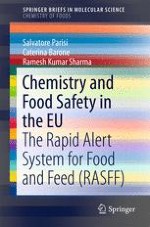This Brief provides a general description of the European Rapid Alert System for Food and Feed (RASFF). It describes the RASFF approach on the legal level and with reference to notification procedures, including also new tools, which were launched in 2014: iRASFF and the RASFF Consumer Portal. In an introduction, the present status of the RASFF, which had originally been introduced in 1979, is briefly reviewed. It is described as the main basis of modern food policy in Europe, enabling member countries to take rapid corrective actions on the one hand, and to perform statistically reliable analyses of food-related hazards on the other hand.
One chapter contains a statistical evaluation of RASFF notifications in general, and specifically with regard to chemical contaminants, including also allergens. In another chapter, reasons for rejections of food and feed at the European borders are analyzed in selected case studies. The Brief provides an easy description for the chemical dangers and contaminants it is referring to, outlining the names, properties, uses and importance in the food and feed industry, toxicological effects, and contamination sources. The last chapter offers an outlook on the future of the RASFF and possible expectations.
